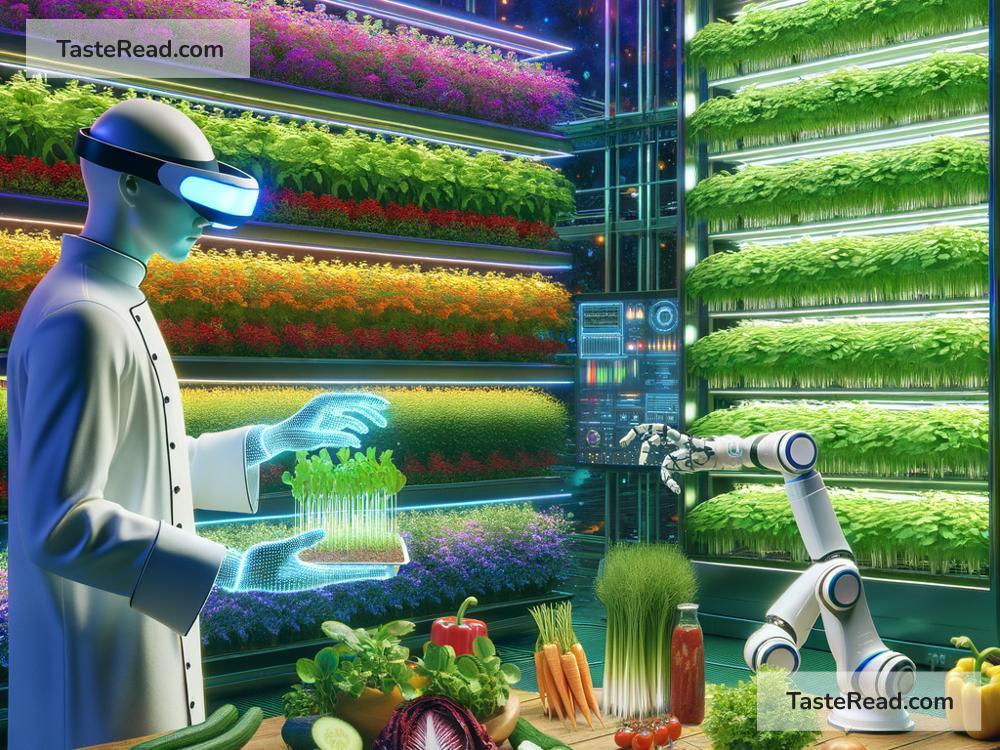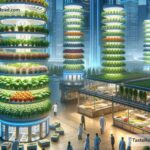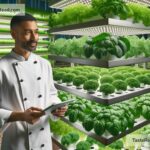The Future of Food and Systemic Innovation: A Simple Perspective
Food is one of the most important things in our lives. It fuels our bodies, nurtures our minds, and even brings communities together. But as the world changes—with growing populations, climate challenges, and new technologies—food systems also need to change. The good news is that innovation can play a big role in shaping the future of food. Let’s explore where food is headed and how systemic innovation is helping solve big challenges.
Why Does the Food System Need Innovation?
The world’s food systems face many challenges. For starters, the global population is expected to hit nearly 10 billion by 2050. That means more mouths to feed, but the planet has limited resources like water, land, and energy.
Climate change adds even more pressure. Rising temperatures, unpredictable weather, and extreme conditions make farming harder. On top of that, food production today is responsible for up to one-third of greenhouse gas emissions, which makes fixing our food systems important for the planet’s health.
Inequality is another issue. Even though we produce enough food for everyone, millions of people around the world go hungry while others waste food. Clearly, the way we grow, share, and consume food needs improvement—and that’s where innovation comes in.
What Is Systemic Innovation?
Systemic innovation sounds like a fancy term, but it simply means creating solutions that improve the whole system, not just one part. For example, instead of focusing only on growing more crops, systemic innovation looks at everything: farming methods, transportation, food packaging, markets, consumer habits, and waste management.
It’s about finding ways for all these parts to work better together. Think of it like fixing gears in a clock—each gear matters, but the goal is to make the entire clock work smoothly.
How Food Is Evolving: Exciting Innovations
Here are some amazing ideas shaping the future of food, backed by systemic innovation:
1. Precision Farming
Farmers are now using advanced tools like drones, sensors, and AI (artificial intelligence) to farm smarter. Precision farming helps them track soil health, water levels, and weather conditions. This leads to less waste, better yields, and sustainable use of resources.
For example, AI can tell farmers the best time to plant or harvest crops, and drones can spray water or fertilizers exactly where they’re needed—no more wasting precious resources.
2. Alternative Proteins
As people grow concerned about the environmental impact of meat production, new protein sources are becoming popular. Companies are creating plant-based meats using soy, pea, and fungi proteins that taste and feel like meat. Brands like Impossible Foods and Beyond Meat are leading this trend.
Even more futuristic are lab-grown meats. Scientists are cultivating real meat cells in labs, meaning you can eat chicken or burger patties without raising or slaughtering animals. These innovations could drastically cut down on land use, emissions, and animal suffering.
3. Vertical Farms
Vertical farming is all about growing crops indoors and stacking them in tall layers instead of planting them in fields. Using LED lights, controlled environments, and hydroponics (with water instead of soil), vertical farms can grow food year-round, even in cities or places with harsh weather.
This approach uses less land and water and eliminates the need for pesticides. It also keeps food production closer to consumers, cutting down on transportation and waste.
4. Reducing Food Waste
Globally, about 1/3 of all food produced goes to waste—whether it’s thrown out by consumers or left to rot before reaching markets. Innovations like smart packaging (which indicates freshness), apps to connect surplus food with charities, and better storage systems are helping reduce waste.
Additionally, companies are creating products from food scraps. For example, turning “ugly” fruits that stores reject into juice or snacks. By cutting waste, we save resources and fight hunger.
5. Edible and Sustainable Packaging
Many foods today come wrapped in plastic, which harms the environment. In the future, packaging may be edible, biodegradable, or made from plants. Scientists are designing wrappers from seaweed, potato starch, or even milk proteins. These materials break down naturally, so they won’t pollute the earth.
What Role Can We Play?
While inventors and researchers lead innovation, ordinary people like us play an important role. Here’s how you can help build a better food future:
- Be mindful of food waste: Plan meals carefully and store food properly to avoid throwing it out.
- Try alternative proteins: Plant-based meats or lab-grown options can reduce the environmental strain of traditional meat.
- Support sustainable brands: Choose companies that care about eco-friendly farming, packaging, and practices.
- Learn and advocate: Stay informed about food challenges and share ideas with others to inspire change.
Final Thoughts: A Shared Responsibility
The future of food is exciting, but it also requires teamwork. Systemic innovation isn’t just a job for scientists or corporations—it’s a shared responsibility. Farmers, policymakers, businesses, and everyday consumers must all collaborate to build systems that work for people and the planet.
If we embrace these innovations thoughtfully, we can achieve something remarkable: a world where everyone has access to safe, nutritious, and planet-friendly food. Change is never easy, but small actions add up—and together, we can ensure that the future of food is bright for generations to come.
So next time you sit down for a meal, think about how your choices and habits contribute to this big picture. The future of food starts with all of us.


